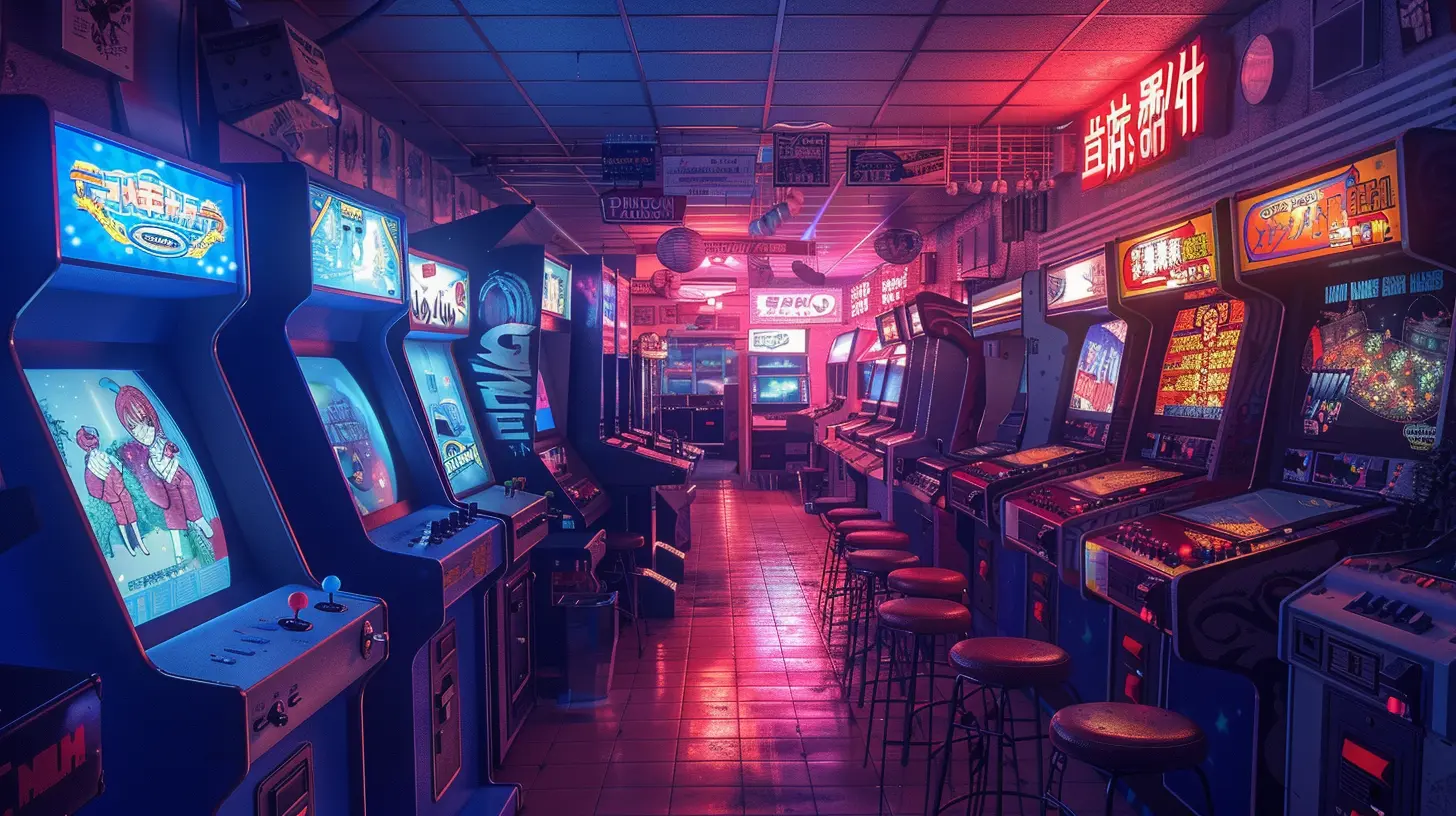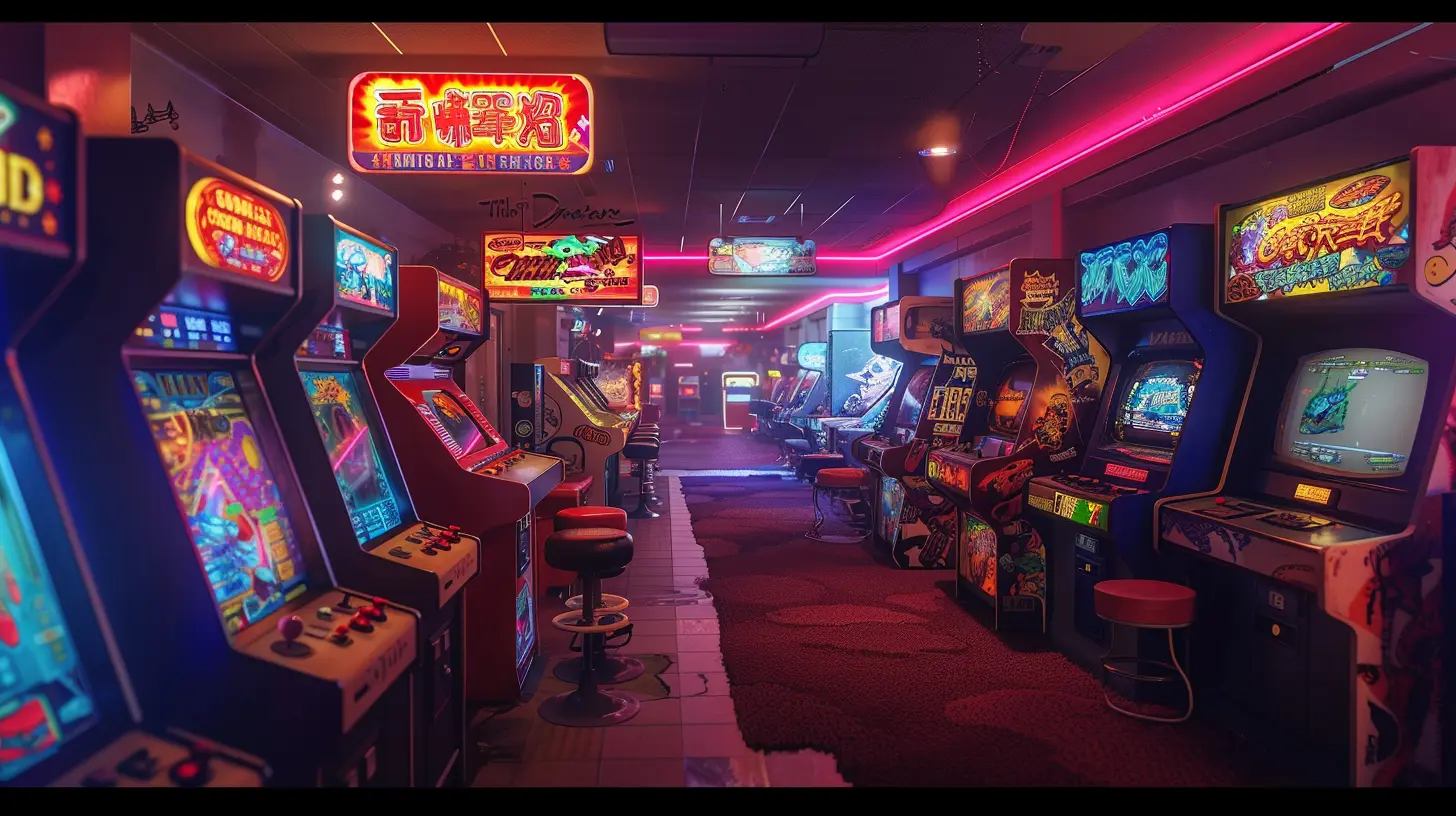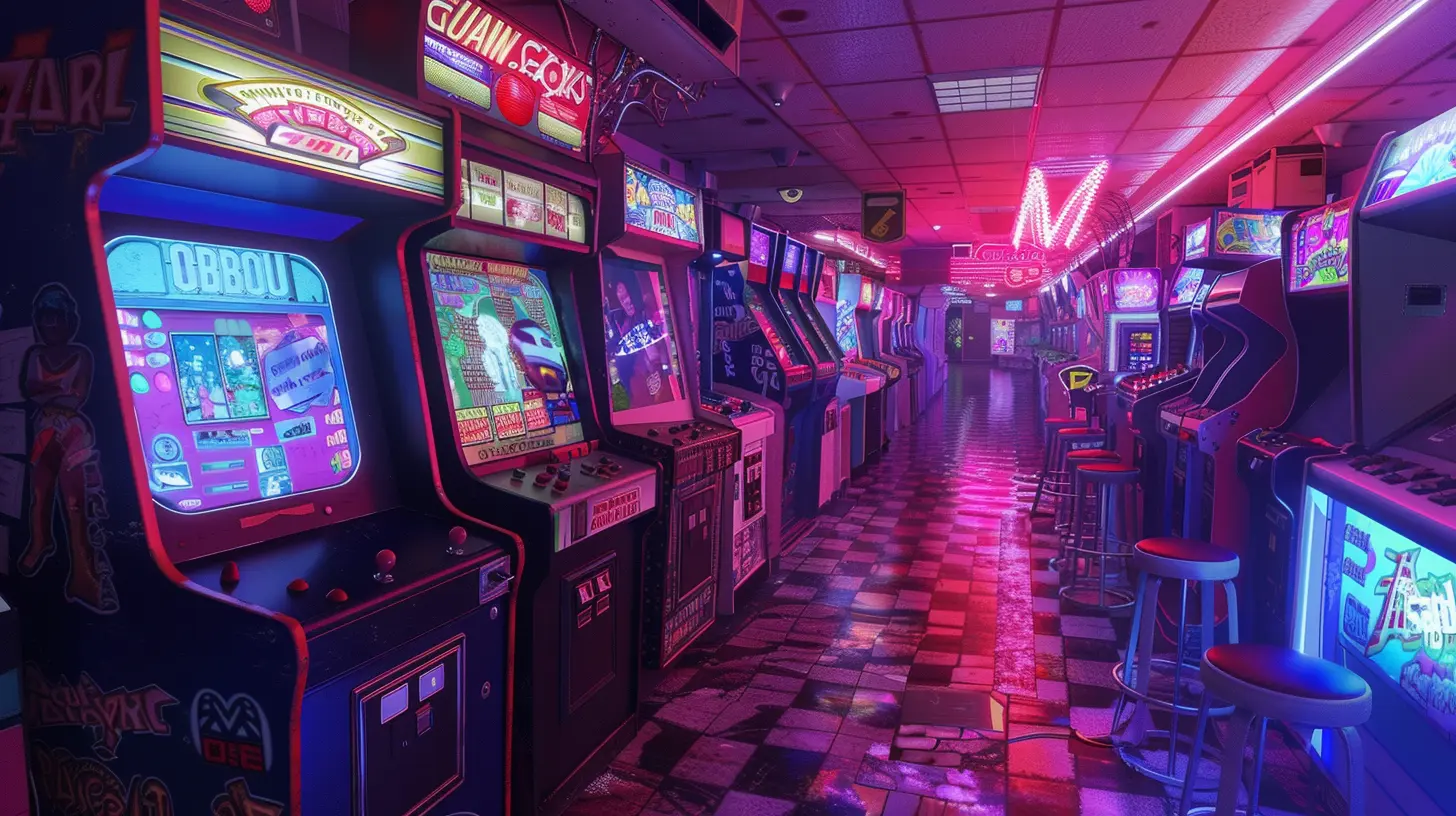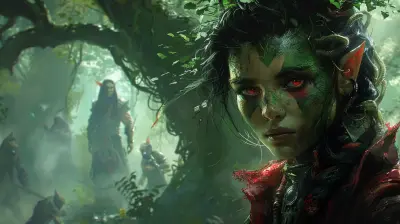Inside the Mind of an Arcade Game Designer
8 February 2025
Ever walked into an arcade, instantly hit by the neon glow and the hypnotic symphony of beeping, buzzing, and cheering? Whether you're maneuvering a joystick, smashing buttons, or feeding coins into a machine, you're stepping into a world meticulously crafted by arcade game designers. But have you ever wondered what goes on inside the mind of these creative geniuses? What makes someone sit down and decide, "I'm going to create a game that hooks players for hours"? Let’s take a deep dive into their thought process, their challenges, and the unique elements that bring these games to life.
The Art of Simplicity: Designing for Instant Engagement
When it comes to arcade gaming, simplicity reigns supreme. Arcade games aren't like modern AAA titles with sprawling narratives and 80-hour campaigns. They're designed to grab attention in the blink of an eye. That’s because most players stumble upon these games in bustling arcades, surrounded by distractions—other games, flashing lights, and maybe even the smell of popcorn. If a game doesn’t captivate players in the first 10 seconds, it’s already failed.So, how do designers pull this off? Think about it like crafting the perfect tweet—short, sweet, and to the point. Designers focus on creating gameplay mechanics that are intuitive and easy to understand. Take Pac-Man, for instance. Even if you’ve never seen the game before, you immediately get what you're supposed to do: eat dots, avoid ghosts, and survive as long as possible. No lengthy tutorials, no complicated mechanics—just pure, unfiltered fun.
What’s fascinating is how designers balance simplicity with depth. Great arcade games are easy to pick up but difficult to master. That depth keeps players coming back again and again. It’s like peeling an onion; there’s always another layer to uncover, whether it’s discovering patterns, improving reflexes, or climbing the leaderboard.
The Psychology of Addiction: Why You Keep Coming Back
Let’s be honest—arcade games are designed to keep you hooked. They’re not just games; they’re dopamine machines. Designers tap into basic human psychology to make sure you’re always chasing that next high score.Ever heard of the term "flow state"? It’s that sweet spot where a task is challenging enough to keep you engaged but not so difficult that it feels impossible. Arcade game designers are masters of creating this balance. They ramp up the difficulty gradually, keeping you teetering on the edge of success and failure. Just when you think you're about to lose, you manage to squeak by—and it feels incredible. That’s your brain getting hit with a rush of dopamine, and you’ll do anything to feel it again.
Another trick? High-stakes gameplay. Most arcade games operate on a "three lives and you're out" system. This scarcity of chances makes every move feel important. Compare that to modern games where you can respawn endlessly—there's no urgency, no real consequence. Arcade games keep you sharp, engaged, and slightly stressed (in the best way possible).
And let’s not forget leaderboards. Whether it’s a public ranking at the arcade or just a "high score" screen, these motivate players to chase bragging rights. It’s like competing in a friendly race—except you're racing against everyone who’s ever played the game.
Visuals and Sound: The Unsung Heroes of Arcade Design
You know that saying, “Don’t judge a book by its cover”? Well, in the world of arcade games, the cover is everything. The visuals and sound of a game are the first things that grab your attention. They’re like the flashy signs outside a carnival, luring you in with promises of fun.Arcade game designers put a ton of thought into the aesthetics of their games. Vibrant colors, exaggerated character designs, and over-the-top animations make the games impossible to ignore. When you walk into an arcade and see games like Street Fighter II or Dance Dance Revolution, they practically scream for your attention.
Sound design is equally important. Think about the iconic waka-waka of Pac-Man or the "FINISH HIM!" from Mortal Kombat. These sounds are instantly recognizable and become part of the game’s identity. Even the upbeat jingles that play when you insert a coin or hit the start button are deliberately chosen to get you pumped.
Interesting tidbit: Arcade soundtracks are often composed with the acoustics of an arcade in mind. Designers know their games will be competing against a cacophony of other machines, so the music and sound effects are designed to cut through the noise. It’s a bit like shouting at the top of your lungs in a crowded room—you have to make yourself heard.
The Challenges of Designing for Coin-Op Machines
Unlike console or mobile games, arcade games come with a unique challenge: they need to make money. Literally. They're designed for "coin-op" machines, meaning players need to keep paying to play. This creates a fine line for designers to walk. The game must be fun enough that players want to keep inserting coins, but not so hard that it feels like a blatant cash grab.One way designers tackle this is by creating short, bite-sized gameplay loops. Most arcade games last only a few minutes per session, but they leave you wanting more. That’s intentional. Designers know that players are more likely to spend another quarter if they feel like they were this close to beating a level or setting a new high score.
Another challenge? Durability. Arcade machines are built to withstand years of abuse—sticky fingers, spilled sodas, and frustrated players slamming buttons. That means every element, from the joysticks to the game design itself, has to be incredibly robust.
Innovation vs. Nostalgia: Walking the Tightrope
Here’s another puzzle arcade designers face: striking a balance between innovation and nostalgia. On one hand, players crave the simplicity and charm of classic arcade games. On the other, they’re always looking for something new.This is why modern arcade games often blend retro elements with fresh ideas. For example, games like Pac-Man Battle Royale take the beloved mechanics of Pac-Man but add competitive multiplayer elements to keep things interesting. It’s like giving an old car a shiny new engine—it honors the past while appealing to a new generation.
Some designers even dig into retro-inspired aesthetics to evoke a sense of nostalgia. Look at the pixel art style of games like Shovel Knight or the resurgence of "8-bit" and "16-bit" soundtracks. They tap into warm, fuzzy memories while offering modern gameplay twists.
What Drives an Arcade Game Designer?
Now that we’ve covered the "how," let’s talk about the "why." Why do people become arcade game designers in the first place?For many, it’s a love of games, pure and simple. Most designers grew up in arcades, spending their allowances on games like Galaga and Donkey Kong. Making arcade games is their way of giving back to the medium that inspired them.
But there’s also something uniquely rewarding about designing for arcades. Unlike console or PC games, which might take years to develop, arcade games are usually smaller in scope. This means designers can experiment more, take creative risks, and focus on the core essence of fun.
And let’s not forget the community aspect. There’s something magical about watching someone play your game in a crowded arcade, seeing their reactions in real-time. For designers, it’s the ultimate adrenaline rush—it’s their version of a standing ovation.
The Future of Arcade Game Design
As much as we love classic arcades, the industry has changed. Home gaming consoles and mobile devices have made arcades less mainstream, but that doesn’t mean they're gone. In fact, the rise of retro gaming and barcades (arcade + bar hybrids) has breathed new life into the format.Modern arcade game designers are incorporating advanced technology like VR, motion sensors, and touchscreen interfaces to create immersive experiences. Think about games like Beat Saber or interactive dance machines—they’re redefining what arcade games can be.
But at its core, the heart of arcade game design remains the same. It’s about creating games that are easy to pick up, hard to master, and ridiculously fun to play.
Final Thoughts: Why We Love Arcade Games
Arcade games may seem simple on the surface, but they’re the product of countless hours of creativity, psychology, and technical innovation. Behind every joystick and button is a designer pouring their heart into crafting an experience that connects with players of all ages.So, next time you’re at an arcade, take a moment to appreciate the artistry behind the games. And maybe—just maybe—drop another quarter into the machine. After all, that’s what keeps this magical world spinning.
all images in this post were generated using AI tools
Category:
Arcade GamesAuthor:

Francesca West
Discussion
rate this article
9 comments
Anna McGrath
Designing games? More like crafting addictive digital obsessions!
March 17, 2025 at 4:02 PM

Francesca West
I appreciate your perspective! Game design does aim to engage players, but it's also about creating meaningful experiences and fostering creativity.
Emery Frye
Great insights! It's fascinating to peek into the creative process of arcade game designers. Your passion truly shines through in this piece!
March 3, 2025 at 3:48 AM

Francesca West
Thank you! I'm glad you enjoyed the article and found the insights valuable!
Falkor Ortiz
Ever wondered what secrets lie behind pixelated screens? Dive deeper into the designer's enigmatic world!
March 2, 2025 at 4:57 PM

Francesca West
Absolutely! There's a fascinating blend of creativity and technical skill in arcade game design that makes every pixel tell a story.
Melody McCool
Loved this peek into the creative process! It's fascinating to see what inspires arcade game designers. Can’t wait for more insights!
February 24, 2025 at 3:50 PM

Francesca West
Thank you! I’m glad you enjoyed it—more insights are coming soon!
Isabelle Chavez
This article beautifully captures the passion and creativity behind arcade game design. It’s fascinating to peek into the mind of someone who crafts experiences that bring joy and nostalgia. Thank you for sharing these insights; it truly deepens my appreciation for the art!
February 22, 2025 at 4:57 PM

Francesca West
Thank you for your kind words! I'm glad you enjoyed the insights into the creative process behind arcade game design. Your appreciation means a lot!
Antonia Gutierrez
Fascinating insights! Understanding a designer's perspective really enhances appreciation for classic arcade games. Great article!
February 21, 2025 at 4:41 AM

Francesca West
Thank you! I'm glad you found the insights valuable and that they deepened your appreciation for arcade games!
Tessa Vaughn
This article beautifully captures the creativity and passion behind arcade game design. It's inspiring to see how innovation and nostalgia intertwine, reminding us all of the joy gaming brings to our lives.
February 17, 2025 at 5:42 PM

Francesca West
Thank you! I'm glad you found the article inspiring. The blend of creativity and nostalgia in arcade game design truly brings joy to all of us.
Easton Smith
Peeking into an arcade game designer’s brain is like diving into a pixel-packed adventure! Who knew dreams were filled with power-ups and high scores? Let the nostalgia roll!
February 17, 2025 at 4:20 AM

Francesca West
Thank you! It’s amazing how nostalgia and creativity collide in game design, turning dreams into pixelated adventures! 🎮✨
Niva Duffy
Diving into the whimsical realm of arcade game design feels like chasing a pixelated unicorn through a candy-coated labyrinth! Who knew imagination could be the ultimate joystick? Can't wait to level up my creativity with these insights!
February 14, 2025 at 5:35 PM

Francesca West
I'm thrilled you enjoyed the article! Embracing creativity is key in game design, and I'm glad you're excited to explore these whimsical realms. Happy designing!
MORE POSTS

How to Make Your Game Feel Alive: Designing Dynamic Worlds

The Role of Queer Representation in Modern Gaming

How Seasonal Rewards Keep Players Coming Back for More

The Science Behind Tank Builds That Never Fall

How Community Feedback Shapes the Best Early Access Games

The Impact of Race and Class in Build Optimization

Fighting Games Ready to Deliver Knockout Moves